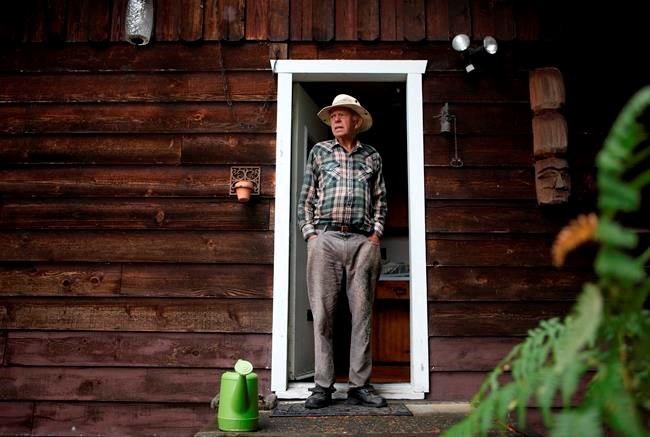DUNCAN, B.C. — Christmas tree growers in British Columbia say they are facing a brown holiday season due to the heat dome that drove temperatures above 40 Celsius for days and burned firs destined for family living rooms.Â
The late June heat dome turned some trees from green to brown and killed many spring seedlings, said Robert Russell. He has been growing Christmas trees on Vancouver Island for almost 50 years and holds a degree in forestry from the University of British Columbia.Â
Russell, 83, said the heat was too much for some of the firs and their needles turned brown, reducing the tree's value at Christmas or rendering it of too poor quality to sell.Â
"The trees were not able to cope with the heat of the solar rays," said Russell, standing beside a two metre tall, seven-year-old Grand fir that would be a prized Christmas tree if not for its singed branches.Â
Douglas fir trees, which are native to B.C.'s coastal regions, fared better than other non-native ones during the heat, but they are often considered to be lower tier because of their needle structure, he said.Â
Russell, who lives in a cabin he built on the 16-hectare Sahtlam Tree Farm near Duncan, said the majority of his business involves wholesale of trees to companies and organizations that market them at Christmas. But the public is also welcome to come and cut their own tree on his property.Â
Wholesale customers have already asked about the status of trees for the Christmas season, he said.Â
"I said, 'you'll get your trees but the quality may not be as good as has been,' " said Russell. "The heat dome's effects are going to limit the numbers of trees available to market."Â
Paul Huesken said he's heard similar stories about heat damage to trees from operators in his area of the Fraser Valley and from growers in Washington and Oregon.Â
"I've been growing trees since 1987 and this is the worst year," said Huesken, who runs Woodsong Christmas Trees near Chilliwack and serves as president of the Southwest B.C. Christmas Tree Association.Â
"Certainly, this is a once in a lifetime event from my experience because our temperatures here were up to 44 degrees Celsius," he said.Â
The heat scorched brown patches to the sides of some trees, leaving them not satisfactory for market or likely only available for sale at reduced rates.Â
"I'm simply saying to some of my (wholesale) customers across Western Canada, 'I don't think I can supply you this year because you might be happy with three sides of a tree, but you won't be happy with the fourth side,' " he said.Â
Huesken said he plans to put up a notice at his farm this holiday season that tells people who want to cut their own tree, they may have to make do with one damaged by heat.Â
"People can walk around the tree and decide if they are going to buy it or not," he said.Â
Sally Aitken, who teaches forestry at the University of British Columbia and is an expert on the effects of drought and heat on trees and plants, said the heat dome could have immediate and long-term impacts for Christmas tree growers.Â
Trees the farmers have been tending for up to seven years could now be damaged and seedlings for future crops have also been decimated because of the heat, she said.Â
Aitken said she noticed changes in trees while in Lillooet earlier this summer when the area was breaking Canadian temperature records in the high 40s. Tree needles were soft and sticky and giving off a strong odour, she said.Â
"It's a tricky situation," said Aitken. "We're watching reactions to situations that are outside of the historical range of conditions, so we don't know what to expect."Â
Russell agrees current conditions are uncharted, but for now he's doing his best to save his crop, shearing and trimming brown branches to keep trees in shape for the festive season.Â
"I have certain techniques for making the tree look as good as possible," he said. "But it is what it is."
This report by The Canadian Press was first published Aug. 2, 2021.
Dirk Meissner, The Canadian Press

